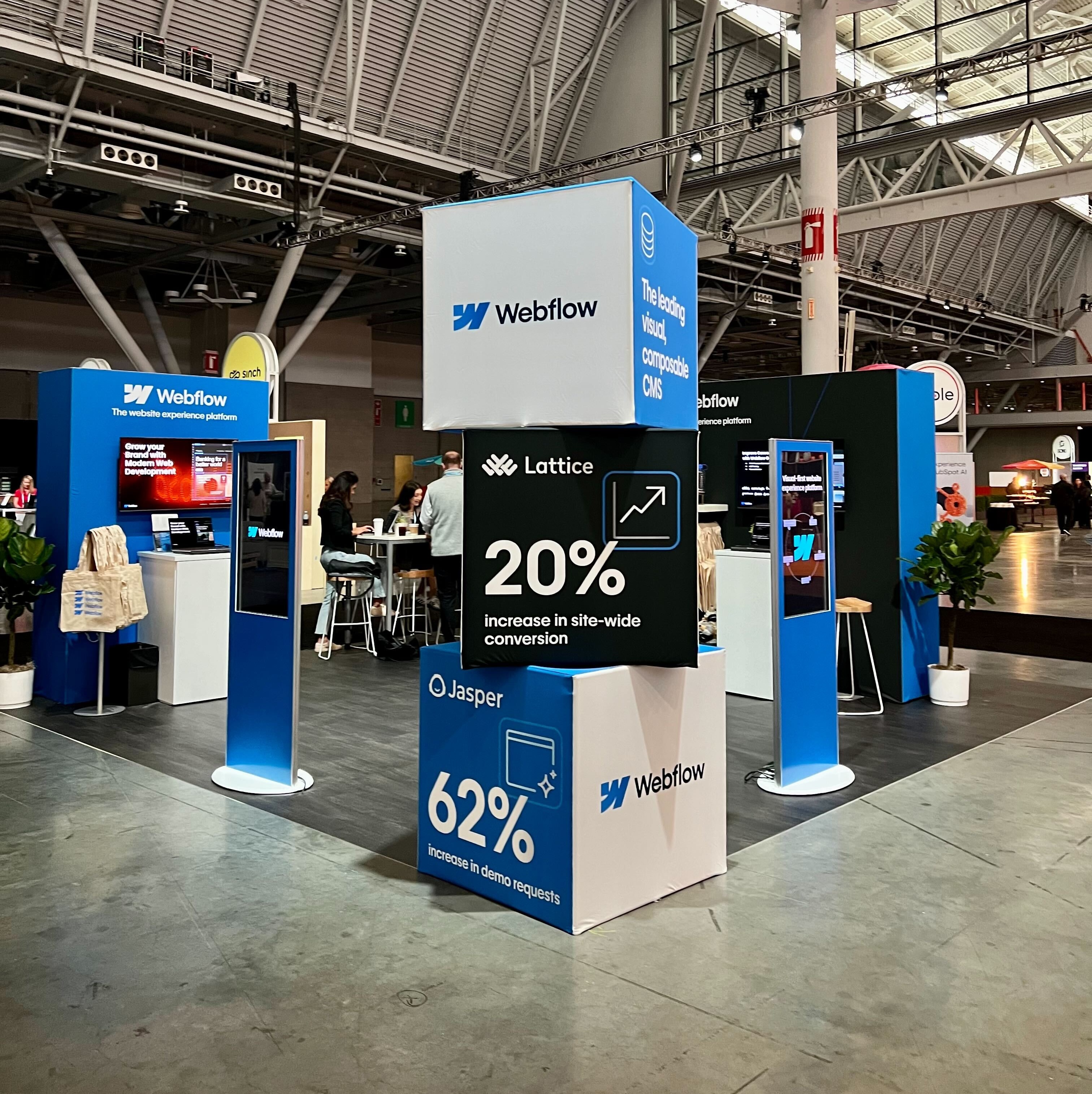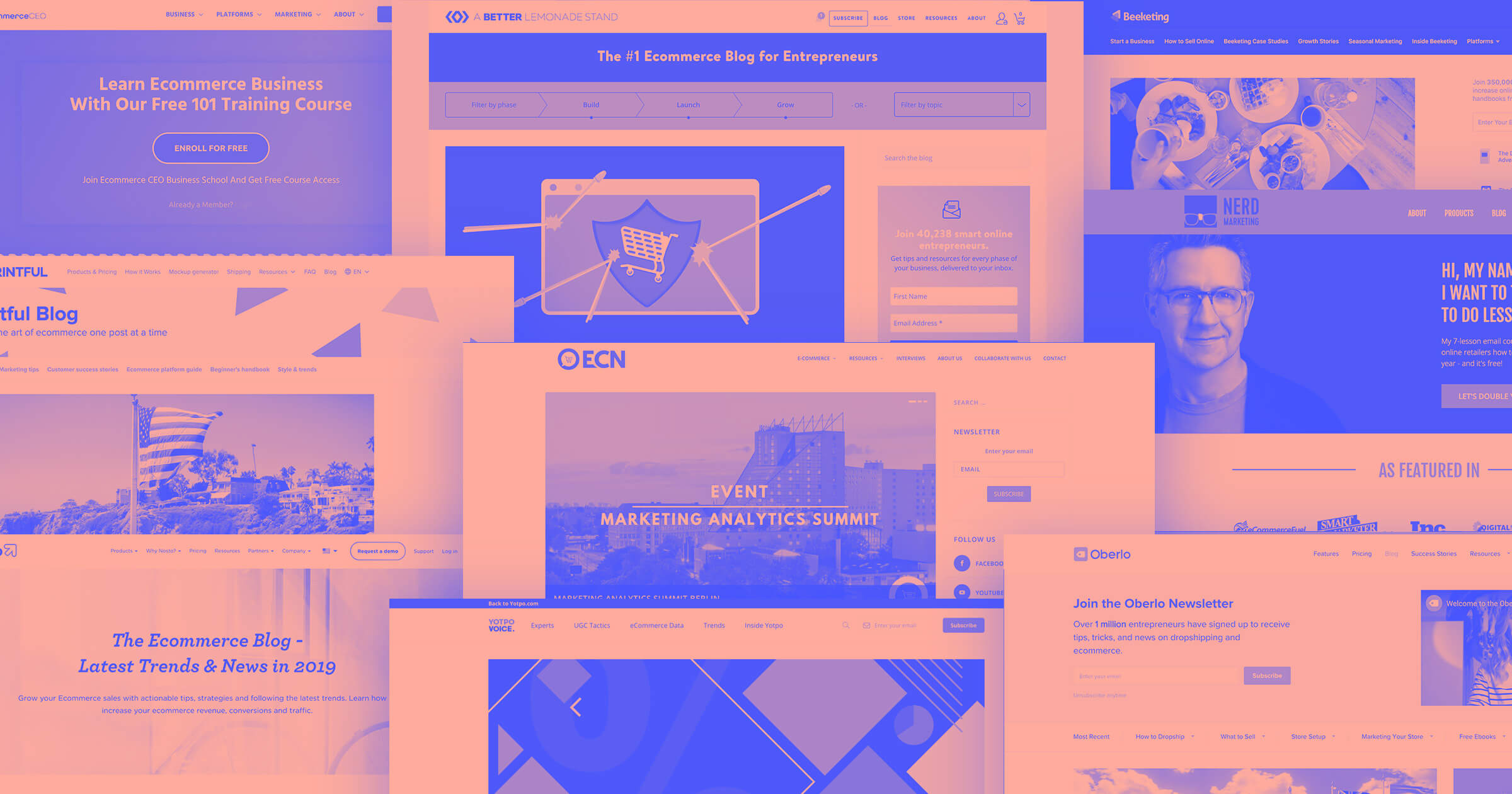At INBOUND 2024, HubSpot brought together marketing, sales, and customer experience leaders to explore this year’s theme: reinventing for growth.
With a wide array of product updates from HubSpot and insightful talks from industry experts, the conference focused on key trends in improved automation and collaboration, new playbooks for go-to-market (GTM) teams, and the incredible potential and current applications of AI.
Our team at Webflow was on the ground in Boston for this year’s event, meeting attendees 1:1 at our booth and sharing our own perspective on growth and the marketing landscape as panelists in the conference programming.

Read on for a closer look at the topics and themes attendees were buzzing over, as well as some clear and actionable takeaways for GTM leaders and teams.
A new playbook for GTM
Yamini Rangan, CEO of HubSpot, opened the event by sharing how today’s growth formula is broken. It has become more challenging for marketers to generate traffic and qualified leads — a major issue during a period where conversion and win rates are also dropping.
To succeed, marketing and sales teams must develop a new playbook for GTM: one that effectively leverages the potential of AI to create more personalized experiences, fosters better team collaboration, and improves the quality of content served to users throughout the customer journey.
Leveraging AI for personalization
A popular topic among GTM leaders was how AI can be a powerful tool for enhancing personalization efforts. By using generative AI alongside human creativity, marketers can create highly-targeted content that speaks directly to their audience's needs and pain points. Using predictive AI, they can also better identify patterns and behaviors to make more informed decisions that improves engagement and helps build trust and credibility with potential customers.
This topic took center stage when Dharmesh Shah, HubSpot founder and CTO, presented about the rise of AI agents. He spoke about software that uses AI to accomplish goals that take multiple steps and shared examples of agents that can complete customer research, optimize landing pages at scale, and even handle support requests quickly and efficiently.
Personalizing web experiences to deliver on customer expectations
It’s no secret that prospects are often inundated with outreach, which can overwhelm them and lead to a loss of engagement. This is a critical GTM problem that highlights why the need for powerful tools and services that drive customer engagement is at an all-time high. To solve this problem, marketers must hone in on meeting prospects in their moments of need, providing them with relevant resources and information when they need it most.
HubSpot’s Yamini Rangan noted that customers today are conducting their own research through review websites like G2, watching videos, reading articles, and speaking with peers. She notes when they do engage with sellers, “Your customers know more about you than you know about them. When sales reps connect with your customer, the bar is incredibly high. That conversation needs to be so tailored and insightful.”
As expectations continue to evolve, businesses must adapt their service strategies to meet the demands of a digital-first world. The challenge lies in providing swift, personalized website experiences while maintaining the human element that builds lasting relationships.
Creating quality content with the help of AI
In today's saturated digital landscape, marketers have the daunting task of cutting through the noise to reach their target audience. The sheer volume of content produced — a staggering 7.5 million blog articles daily — makes it increasingly difficult to capture and retain attention.
To overcome this challenge, we heard marketing leaders discuss the importance of shifting their focus from quantity to quality. It's no longer enough to simply create more content; instead, the emphasis should be on crafting strategic, relevant, and human-centric messaging that resonates with your audience. By prioritizing authenticity, originality, and value, brands can stand out in the crowded digital space and forge meaningful connections with prospects.
This is especially true with the advent of generative AI, which can be a powerful content production partner when used thoughtfully. As more organizations lean on this technology to create content at scale, more are becoming aware of the consequences of doing so without intention. This is especially important as the potential negative impact on organic search becomes palpable, with Google’s algorithm making strides and developing stronger capabilities to identify AI generated content vs. authentic, human-first content.



















Relive all the fun of Webflow Conf 2024
From our keynote to the inspiring and informative breakout sessions, all recordings from this year's Webflow Conf are now available to watch on demand.
Navigating the tech landscape
The rapid evolution of marketing and sales technologies presents both opportunities and challenges for GTM teams. While new tools promise enhanced capabilities, integrating them effectively into existing workflows can be daunting — a topic that was the central focus of quite a few sessions at INBOUND 2024.
Integrating new tools for growth
Websites are the cornerstone upon which modern enterprise businesses connect with customers, so as competition and consumer expectations shift, a well-designed and integrated marketing site is mission critical. Webflow’s CEO, Linda Tong, spoke with Neda Stoll, Senior Director of Marketing at HubSpot during their session, The Future of Digital Growth: Navigating Web Challenges.

Tong noted that 65% of marketing leaders feel restricted by their current web development processes. This highlights a central pain point: marketers who are responsible for the brand and for the bottom line don’t have enough agency over the most critical marketing asset — the website. She explained how solving for this requires a new operating model — one that puts greater ownership and shared accountability back into the hands of marketers.
When it comes to preparing for the next era of the web, Stoll highlighted that marketing leaders must deeply understand their ideal customer and their buying journey, as well as make it very easy for those customers to discover and engage with content as they’re conducting research. She called out how AI agents, such as chatbots, can help here, but emphasized that teams should continually test out tools, gather customer feedback and use insights to continually improve website conversions.
Enabling cross-functional collaboration
Another standout topic was how complex legacy tools and software are failing digital-first teams. Marketing leaders expressed their top priority was to break down silos and foster collaboration between marketing, sales, and customer experience teams.
A few sessions, such as Unleashing Your Marketing Team’s Potential With AI, focused on successful examples of nimble and impactful marketing campaigns, often executed by small teams who could work cross-functionally and experiment with new tools to speed up tasks and actions. And folks who stopped by our booth get a firsthand look at Webflow’s latest page building and team approvals features, which makes it easier-than-ever for teammates to ask for input, get feedback, confirm approvals, and launch website content.
Synchronizing an ever-evolving tech stack
In the same vein of issues with legacy tools, many attendees expressed how they feel they’re also in golden handcuffs, locked in with an agency or vendor that manages and maintains the site. As a result, making small updates ends up being a costly, time-consuming and complicated process that constrains marketers’ abilities to be nimble and responsive and bring their web experiences to life.
On Thursday, our Head of Product Partnerships, Greg Kelly, sat down with Tom Newton, VP of Marketing at Jasper, and Brendan Gualdoni, Head of Digital Commerce Platforms at Wiley to discuss how marketing teams can start to solve these problems.
They covered the importance of providing guardrails around modern web design and development and building strong relationships with IT teams to equip marketing teams with the ability to move with speed. They also encouraged attendees to look at their stacks and leverage the power of integrations for SEO, personalization, CRO, and more to help cater to their customers’ needs across the entire journey.

Endless opportunities for growth
INBOUND 2024 was action-packed with exceptional content and networking opportunities, and we were so grateful to be on the ground in Boston to meet with exceptional teams building the solutions of tomorrow. As the entire tech industry continues to navigate the evolving landscape of marketing and sales, it's clear that embracing change is essential for future success.
One of the biggest lessons we hope attendees walk away with is that while tools and technologies continue to evolve, true and thoughtful adoption is also critical for successful GTM motions. Additionally, building human-centric experiences is table stakes, and teams should remember that the synergy between humans and technology is what truly drives meaningful connections and sustainable growth. Lastly, by focusing on authenticity, personalization, and cross-functional collaboration, GTM leaders can position their teams to thrive in an increasingly complex and competitive landscape.
To connect with our team that was on the ground in Boston or simply learn more about how Webflow empowers marketing teams to create, optimize, and scale web experiences that get results — without writing code — get in touch!
































